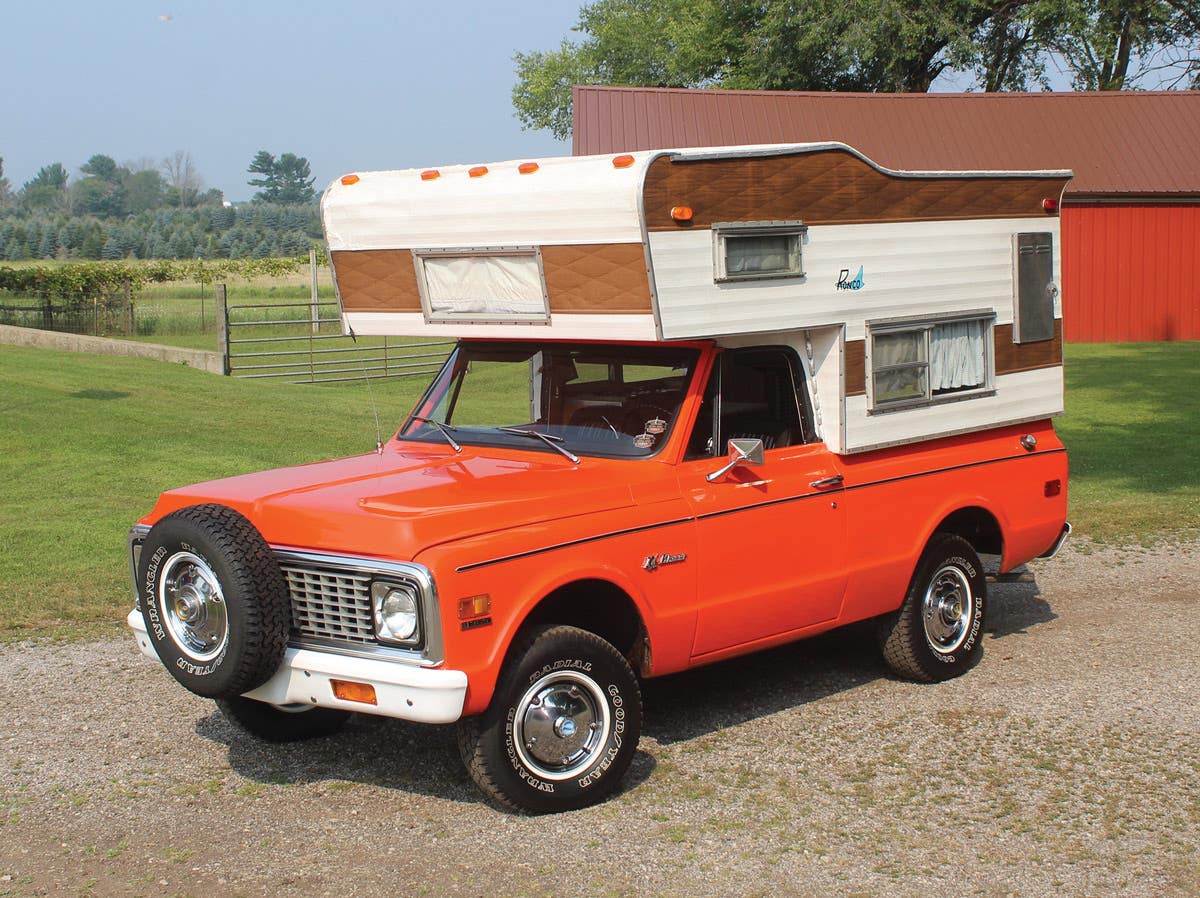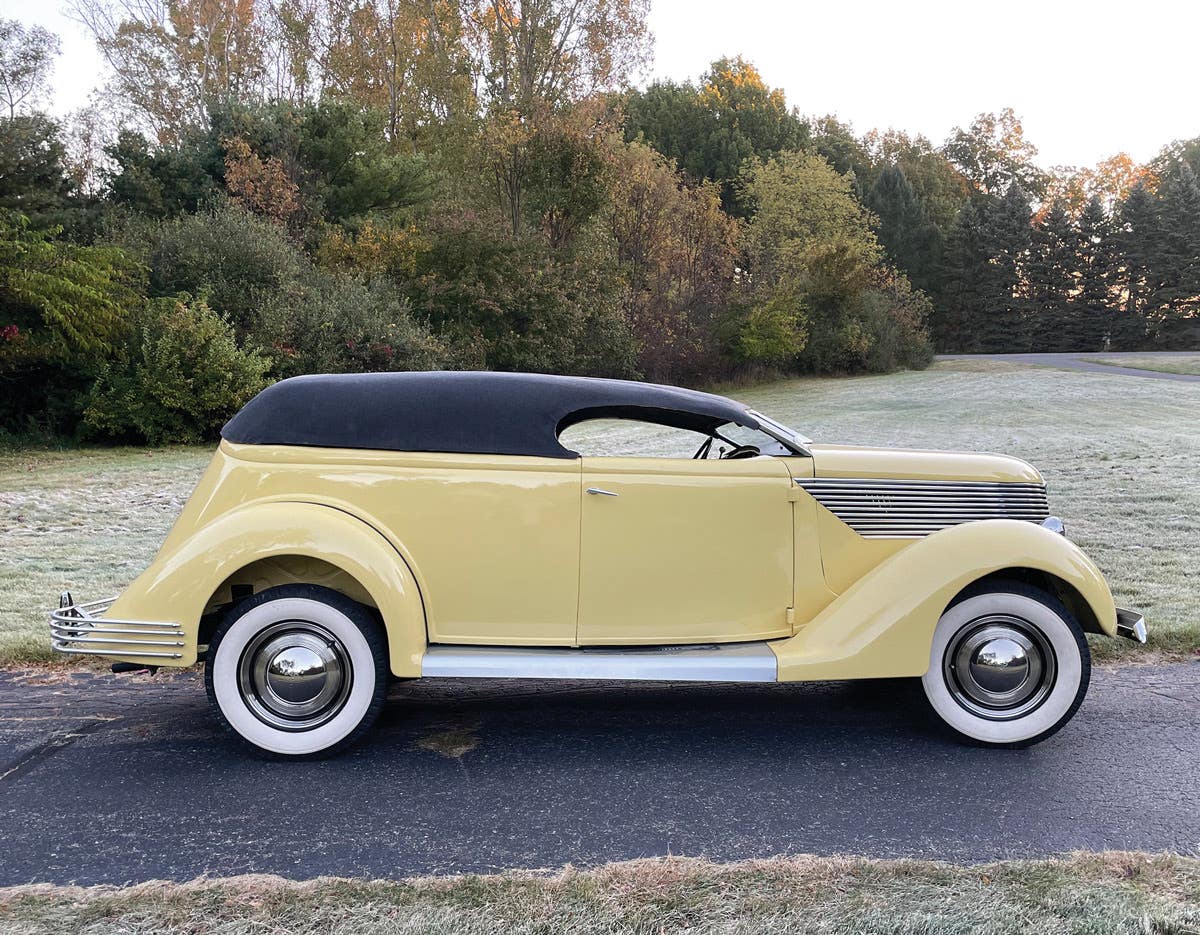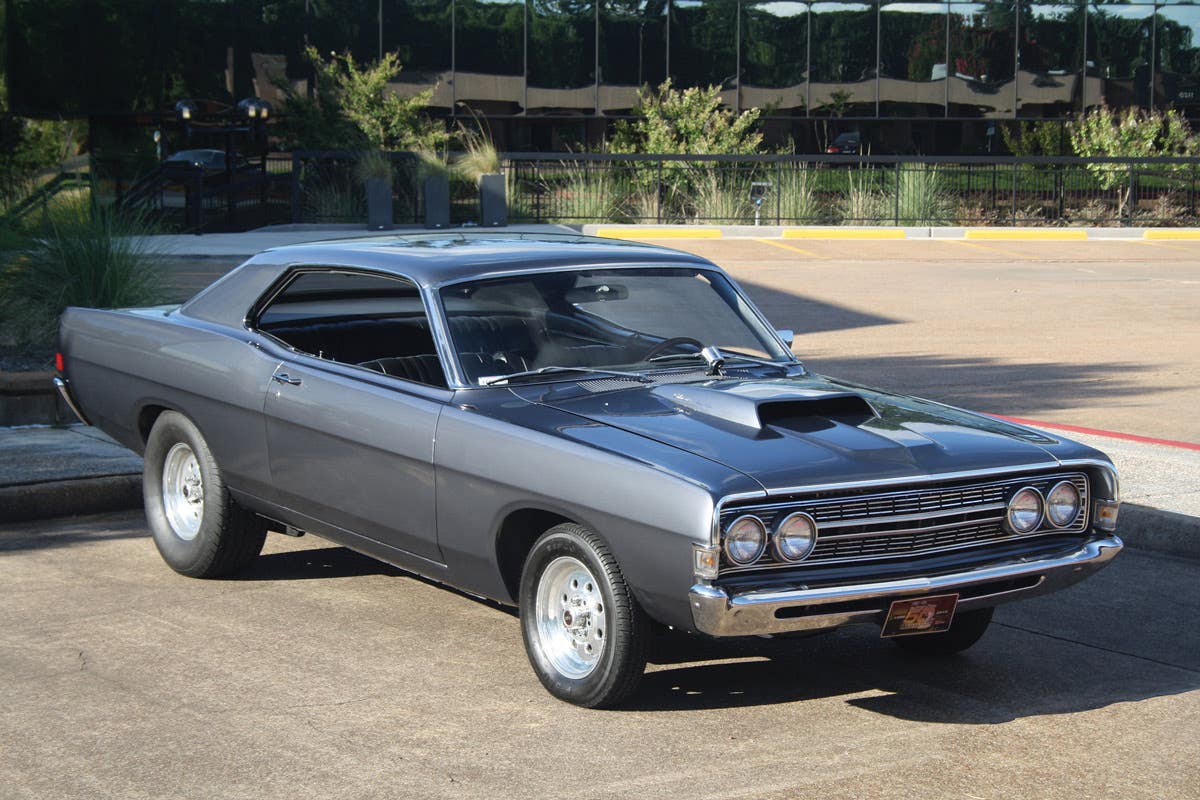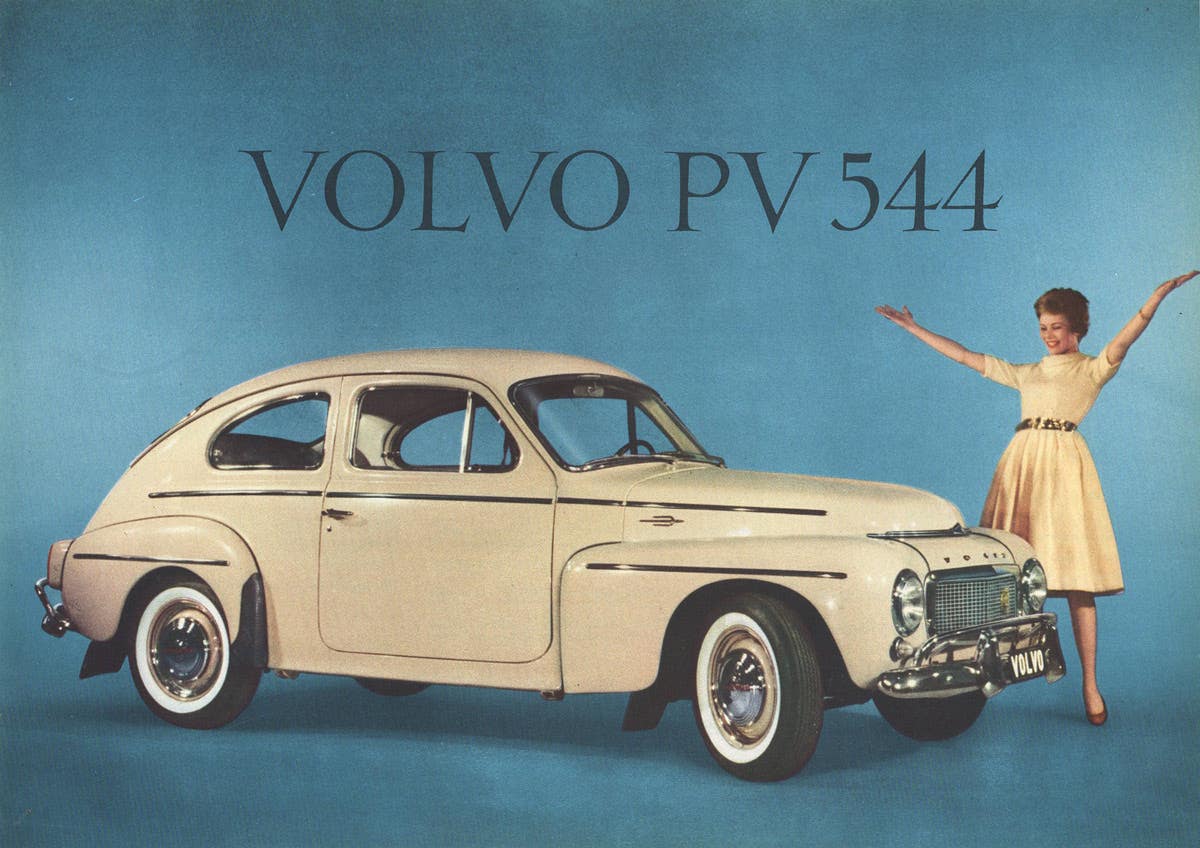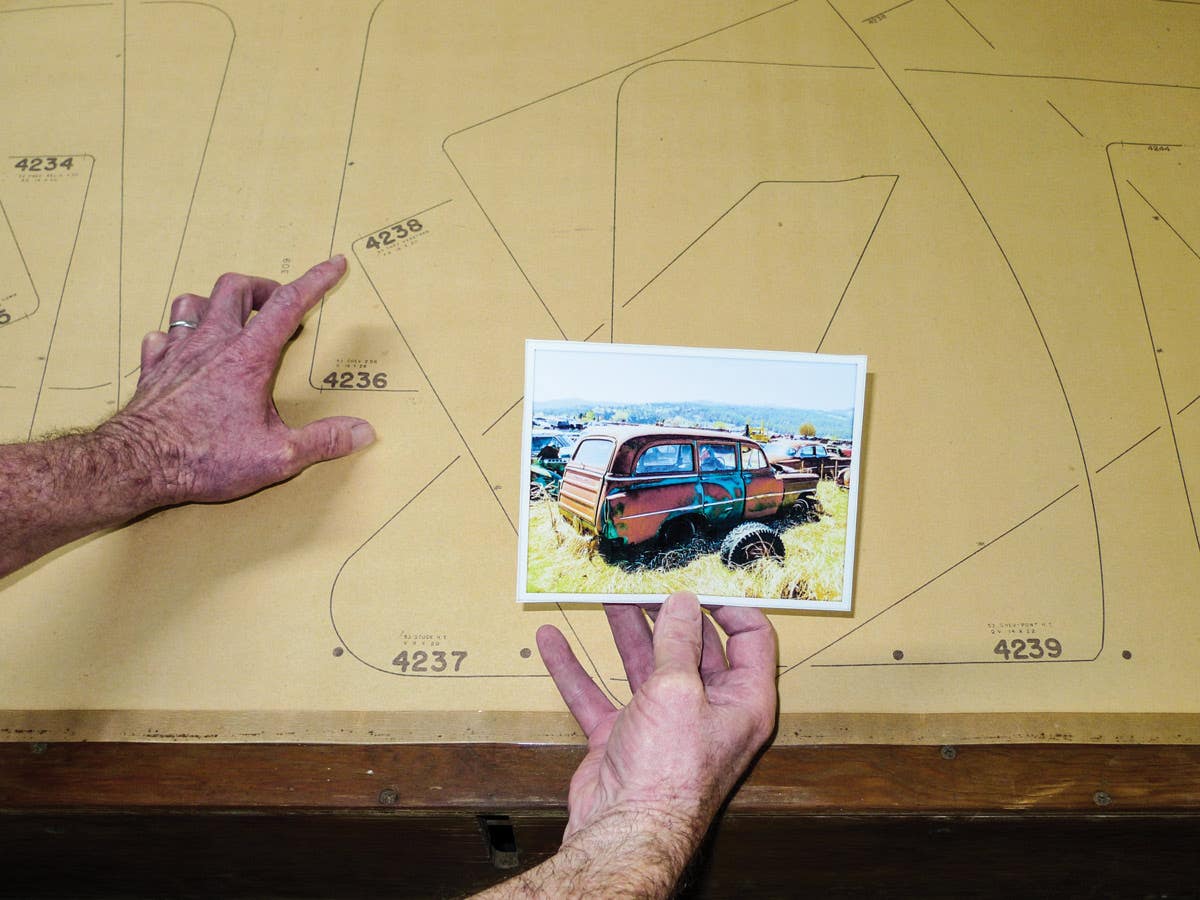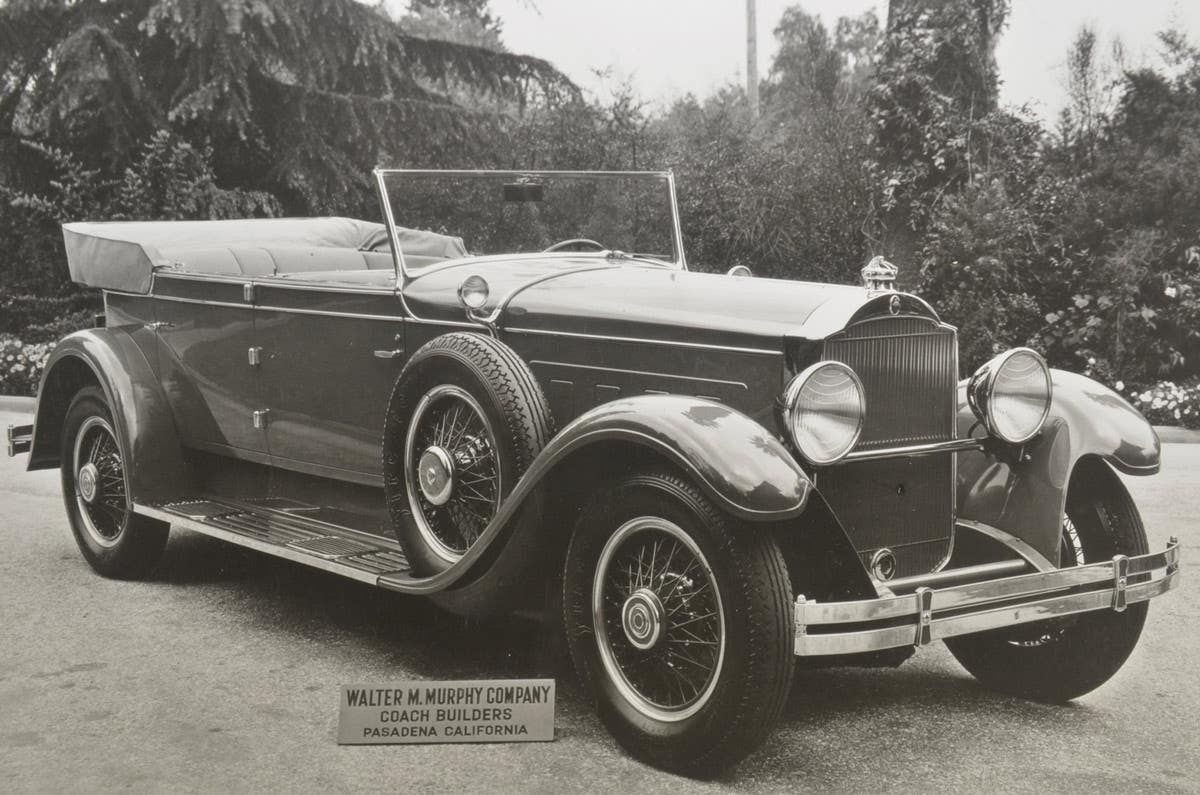British Invader: the Allard roadster
The racey Allard is still a bit of a mystery for many American car buffs.
While Sydney Allard is an important automotive figure, his Allard automobiles tend to be misunderstood. Let’s set the record straight.
In 1930, 20-year-old Sydney Allard was selling cars at a Ford agency that his family owned in London. The cars he sold were not pioneer vehicles like horseless carriages or high-wheelers. In fact, some were rather sporty, performance models of the era that Allard tuned up for his hobby of trials racing.
As early as 1929, Allard had raced Morgan Super Sports at Brooklands. He wasn’t amazingly successful with that three-wheeler or with his later flathead Ford racing cars. However, his first Allard Special of 1936 performed well in hill climbs, rallies and trials. It was constructed using part of a Bugatti body mounted on a shortened Ford coupe chassis fitted with a flathead V-8. Allard built 11 more specials, with Ford V-8s or Lincoln V-12s, prior to the war.
After the war, Allard’s family kept the Ford dealership, but Sydney formed Allard Motor Co. January 1946 brought his first postwar car. The two-seat J1 racer featured a Ford flathead V-8 and a Ford transmission mounted in a special chassis. It came out of a new factory at Clapham (not far from central London). Allard replaced the Ford front suspension with an independent suspension designed by Leslie Bellamy. It combined a split front axle with a conversion of the Ford transverse leaf spring setup. Just 12 J1s were made.
Next came the K1, essentially a J1 with six-inch-longer wheelbase. Under the hood was a nearly stock 221-cid/86-hp British Ford V-8. A few K1s used the more powerful 239-cid/96-hp V-8 from Canadian Mercurys. The stock transverse-spring front axle was split to become an independent swing axle. At the rear was a torque tube with a “live” beam axle held by a transverse leaf spring. The K1 frame was made for Allard by Thomsons of Wolverton with stamped-steel channel sections. The steel body panels were attached to a wood framework.
With a squarish grille using vertical bars that appeared to roll down its curvy nose, the 2,460-lb. K1 had a homemade look. Its front and rear fenders were separate. All K1s were right-hand-drive cars. It’s possible three of 151 K1s built arrived in the United States, although it was never officially sold in America.
“Roadholding and stability which allow an enthusiastic driver to throw it about as he pleases,” said Autocar. The Motor noted one was “immediately impressed by the way in which appearance has been blended with the requirements of the fast driver.” The editor added: “What appear to be impossible speeds can be safely maintained without the slightest sign of skidding.”
A K1 could hit 92-93 mph and 0-to-50 mph took 11.5 seconds. The quarter-mile took about 20 seconds. Allards won the 1947 and 1949 Lisbon Rallys, took five awards in the 1947-1948 Alpine Rally and won the three trophies in the 1949 Monte Carlo Rally.
The cars were rare. Seven were built in 1946, 173 were sold in 1947, 432 in 1948 and 265 in 1949. Not all of these units were J1s and K1s.
Although early postwar Allards were received well in Great Britain, Sydney Allard wanted to make inroads into the U.S. sports-racing market. A new J2 was said to be “specially designed for the American competition motorist.” The J2 resulted from a trip Allard made to America. Riding the same 100-inch wheelbase as the J1, the car did well both in sales and on the racetracks of the world.
Among Allards’ various available engines was a 239-cid, 40-bhp Ford V-8 with an Ardun overhead-valve conversion. The Ardun kit was made by Zora Arkus-Duntov of New York City, who later became famous as chief engineer of the Corvette. Operating with pushrods and rocker arms, the kit produced an engine similar to early Chrysler Fire Power Hemis. The Ardun option was abandoned after the first few dozen J2s, but the Chrysler Hemi and the Cadillac V-8 were made available. Allard said the wide choice of engines was offered “to permit the enthusiast to fit his own particular choice of motor, hopped-up or otherwise.”
Although the J2 was a competition car, it was also capable of road touring. Allard made it available with either left- or right-hand drive. A small vertical-bar pentagonal grille sat in a curvy protruding nose. The engine-turned instrument panel contained a five-inch speedometer and tachometer, oil-and-temperature gauge, ammeter, fuel gauge and fuel switch. The body had bolt-on rear fenders and cycle-style front fenders, separate headlights and tiny round taillights.
Though basic in appearance and engineering, the J2 was quick. Top speed with a Cadillac V-8 was reported as 110 mph. Some enthusiasts claimed 130 mph. Cad-powered cars did 0-to-60 mph in 5.5 seconds and covered the quarter-mile in 16.3 seconds, which was literally unheard of at the time. Highly modified Cad-Allards reached 250 bhp with twin carburetors, special camshafts and racing heads. These cars could to go from 0 to 100 mph in as little as 12 seconds.
Allard’s brochure said the J2 had “just about everything for the speed man.” The 1,950-lb. chassis assembly cost $2,237. The J-type with a 239-cid Canadian Mercury flathead V-8 with Solex carbs added $568. Early buyers could order Ardun heads or a competition model with a 120-hp Mercury engine bored out to 266.8 cubic inches. An Allard body added $560 to the car’s price. Price with the 331-cid, 160-hp Cadillac V-8 was about $3,995. The 331-cid Chrysler Fire Power Hemi made 180 hp. Both of these overhead-valve V-8s also added hydraulic valve lifters.
The J2s used a 3.54:1 rear axle. The front suspension was similar to the J1/K1 type. At the rear, a De Dion axle with quick-change differential and coil springs was used. Lockheed 12-in. brakes were used with Al-Fin drums. Designed chiefly for racing, the car carried a 26-gal. fuel tank with a reserve tank.
A total of 305 Allards were sold during 1950 and 337 the following year, but not all were J2s. Only 21 cars went to American buyers in 1950 and 42 in 1951. The U.S. distributor was Moss Motors Ltd., of Los Angeles, Calif.
Sleeker in appearance than the earlier Allard K1, the K2 Sports Tourer could be easily identified by three Buick-style “portholes” decorating the small bonnet (hood). The bonnet carried an air scoop and short hood straps. A pentagonal grille with vertical bars — shaped like that of the J2 — replaced the K1-style “waterfall” grille. Round headlights were mounted low in the “clamshell” fenders.
The K2 roadster’s cut-down doors had a gracefully curved upper edge. The rear end had a Jaguar XK-120 look. Short, horizontal overriders were fitted. A high-compression aluminum head, a floor-mounted gearshift lever, a racing-type fly-off hand brake, a windshield and all-weather equipment was standard.
The K2 cockpit was similar in design to the interior of four-passenger Allards. A fabric curtain behind the seat gave access to a small luggage area. Leather bucket seats faced a telescoping steering wheel. Both right- and left-hand-drive configurations were offered.
The frame was stamped by Thomsons of Wolverhampton, while power trains and axles again came from Ford. Four engines were available: the 221-cid flathead Ford V-8, a 239-cid Mercury flathead V-8, an Ardun modification of the 221-cid Ford (140-hp) and a bored-out 266.8-cid Mercury engine with aluminum heads. Many K2s were sold here. They were priced at $2,739 without engine or $3,094 with a standard 221-cid/85-90-hp V-8.
The classic J2X of 1952-1954 was Allard’s competition-type roadster. Perched on a 100-inch wheelbase, the J2X came in either standard or Le Mans form and was available with Chrysler, Lincoln, Mercury or Cadillac engines. Its appearance was like that of the J2.
Most J2Xs had Chrysler or Cadillac V-8s, but some carried the 239-cid Mercury flathead V-8. Many had optional center-lock, knock-off wire wheels. The standard J2X had a custom-built, aluminum body with cycle fenders and an aero windshield. It was largely a racing model. The more costly Le Mans edition had a completely different look, with an aerodynamic body. The suspension followed the usual Allard layout. Options included a windshield, wire wheels and a top.
The standard J2X roadster cost $3,480. The 200-lb. heavier LeMans body cost $280. Production of both models for 1952-1954 amounted to just 83 cars.
A J2X in proper tune could hit 120 mph. The 320-hp Chrysler V-8 model did 0-to-60 mph in 7.9 seconds. Others reported figures as low as 7.2 seconds. The factory rating for 0-to-50 mph was 6.8 seconds and the quarter-mile took 16.7 seconds.
Although production continued through 1959, only about seven cars were made after 1954, including a Mark II version of the Allard Palm Beach convertible. Production never went beyond a few hundred annually, but Allard introduced a surprising number of models with a wide selection of powerplants.
Much tamer than the race-oriented J series, the K3 was Allard’s touring model. Introduced in 1952, it was much more modern, inside and out, than the K2. Rounded lines, with three horizontal bars in an unadorned opening, made up the K3’s grille. Little ornamentation was evident on the aluminum body, except for a small emblem above the grille that spelled out the Allard name in red letters.
The K3 somewhat resembled the American-built Cunningham C2. It had an aluminum “envelope” body on a frame that used two stacked chrome-moly tubes for side rails. It had a small horizontal hood (more of a lid) and no door handles. Small round parking lamps stood below the headlamps. Gauges went in the center of the basic dashboard. As before, it used a split-axle front suspension and a De Dion rear axle. The wheelbase was six inches shorter than a K2’s.
A choice of four engines was offered, including the 221-cid British Ford flathead V-8, the 239-cid Mercury flathead V-8, the Chrysler Hemi and, later on, a Jaguar six. The Ford engine ran a 7.0:1 compression ratio and a Ford-made Chandler Groves carburetor. It was used in several models, and in the K3, it was rated 95 hp at 3,800 rpm. The optional Mercury engine was basically a larger version of the Ford mill fitted with two carburetors and advertised as 95-100 hp at 3,600 rpm. The 331-cid, 180-hp hydraulic-lifter Chrysler V-8 was hot. The addition of the 210-cid twin-cam provided 160 hp at a high-revving 5,200 rpm.
The K3 could do 98 mph flat out and accelerate from 0-to-50 mph in 8.3 seconds, according to factory ratings. In October 1954, Road & Track complimented the K3 Allard for its fine acceleration, handling and steering, but complained about its large turning radius. Fault was also found with the car’s clutch and transmission, as well as its flapping top, poor ventilation and windshield wipers, and the lack of a heater and defroster. Most K3 models were sold in the United States and the last K3 was built in October 1954.
Advice to the Allard aficionado
There’s no doubt that the Allard is an outstanding collector car. It is good looking, unique, rare, sporty, fast and endowed with a most interesting history. The legendary Cad-Allards tore up racecourses in the early ’50s and became a part of the historic British sports car invasion.
Old Cars Weekly has noted Allard owners encountering problems in concours competition. While we feel these cars represent an exceptional collector’s car, the marque is not that widely known and judges without specific knowledge of British cars have trouble dealing with the fact that Allards came with Ford-Mercury, Cadillac, Chrysler and Jaguar engines. We have heard the question, “Doesn’t that make it a hot rod?” posed at shows, by people rating these cars against much more common factory production models. It’s a pity, but it is true.
If you’re considering the purchase of an Allard, we recommend contacting The Allard Owners Club – America, c/o Andrew Picariello, Membership Secretary, PO Box 1378, Marstons Mills, MA 02648. Email: afpic@cape.com.
CLICK HERE to tell us what you think in the Old Cars Weekly forums



